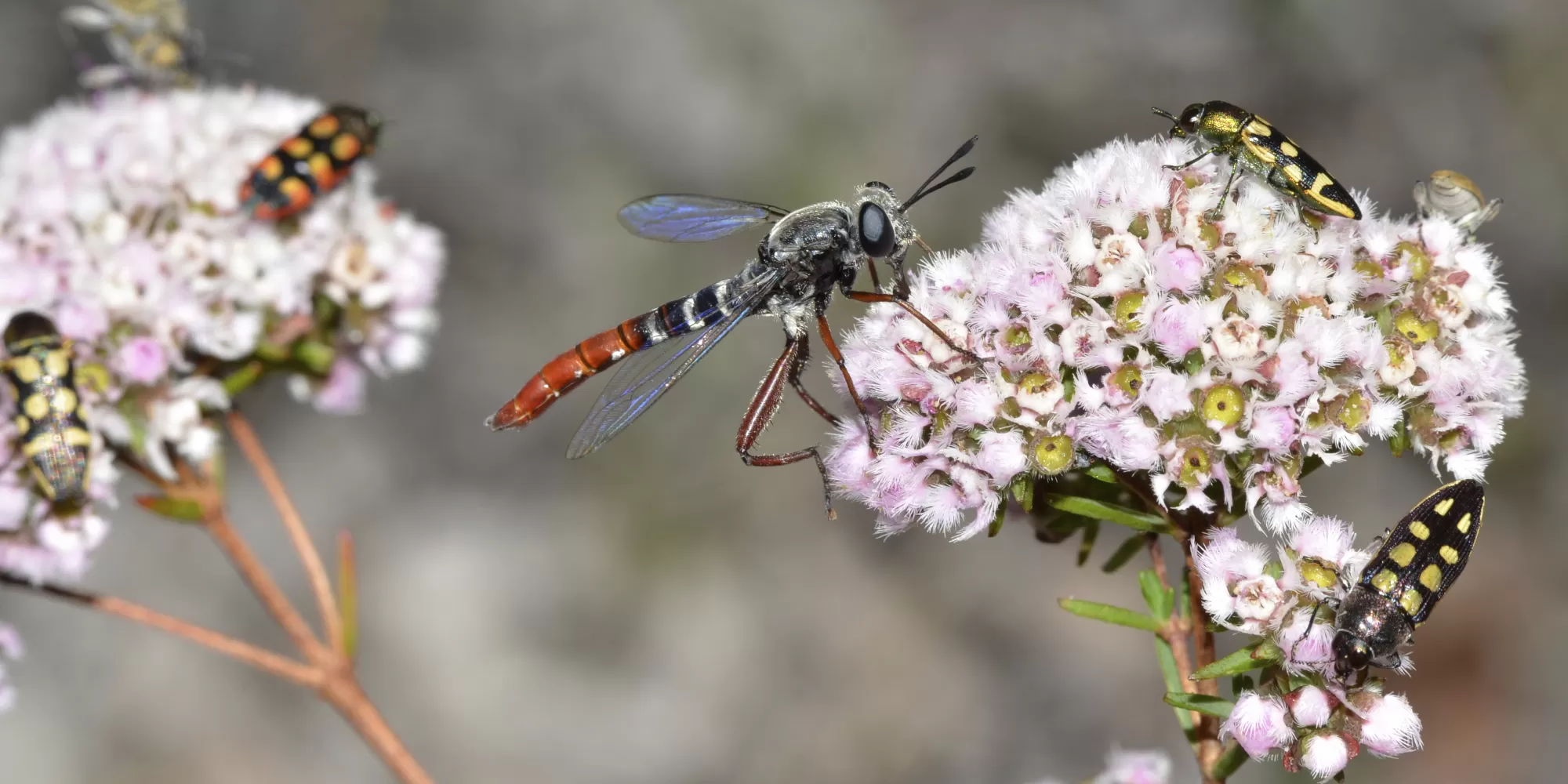Search

About
The Department of Entomology combines a vibrant research community with an insect collection that serves as the core for collections-based research in both basic and applied fields of study.
With over 35 million specimens, the Smithsonian insect collection is one of the largest entomological collections in the world. Specimens and their associated data are used as the basis for original collections-based research on the taxonomy, life history, geography, and evolutionary history of insects, arachnids, and myriapods. The collections are world-wide in scope and include large holdings of medically and agriculturally important species making parts of the collection especially significant as sources of research into the evolutionary relationships and identification of insect pests.
The collection is administered by the Smithsonian Institution, but four separate U.S. government agencies provide research and curatorial staff, i.e., the Smithsonian (SI), the Systematic Entomology Laboratory (SEL) of the Agricultural Research Service, U.S. Department of Agriculture, the National Identification Service (NIS) of the Animal & Plant Health Inspection Service (APHIS), U.S. Department of Agriculture, and the Walter Reed Biosystematic Unit (WRBU) of the Walter Reed Army Institute of Research, U. S. Department of Defense. The four agencies have separate missions: SEL and NIS scientists study primarily taxa of agricultural importance and provide identification services, WRBU dipterists focus on medically important flies, and SI researchers are open to choice of groups of insects and research field.
The collection is housed in three locations in the Washington, DC area. The core, and largest part, is housed in the National Museum of Natural History where most of the researchers are working, too. Parts of the collection including all medically important flies, all myriapods, and several other groups of insects are located at the Museum Support Center in Suitland, MD, and the aphid and mite collections are located at the Agricultural Research Center in Beltsville, MD.
Cooperation between these affiliated agencies is directed toward the common objective of developing the United States National Museum (USNM) entomology collection for research and reference.